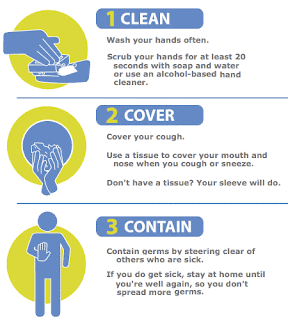World Health Day is celebrated every year on
7 April, under the sponsorship of the
World Health Organization (WHO).
In 1948, the World Health Organization held the First World Health Assembly. The Assembly decided to celebrate 7th April of each year, with effect from 1950, as the World Health Day. The World Health Day is celebrated to create “awareness of a specific health theme to highlight a priority area of concern for the World Health Organization (WHO)”. Activities - related to that particular theme and the resources provided - continue beyond 7th April, that is, the designated day for celebrating the World Health Day.
World Health Day 2009 : Save lives. Make hospitals safe in emergencies 
World Health Day 2009 focuses on the safety of health facilities and the readiness of health workers who treat those affected by emergencies. Health centres and staff are critical lifelines for vulnerable people in disasters - treating injuries, preventing illnesses and caring for people's health needs. Often, already fragile health systems are unable to keep functioning through a disaster, with immediate and future public health consequences.
This year, WHO and international partners are underscoring the importance of investing in health infrastructure that can withstand hazards and serve people in immediate need. They are also urging health facilities to implement systems to respond to internal emergencies, such as fires, and ensure the continuity of care.
World Health Day 2008: Protecting health from the adverse effects of climate change
World Health Day, on 7 April, marks the founding of the World Health Organization and is an opportunity to draw worldwide attention to a subject of major importance to global health each year. In 2008, World Health Day focused on the need to protect health from the adverse effects of climate change.& establlish links between climate change and health and other development areas such as environment,food,energy,transport.
The theme “protecting health from climate change” puts health at the centre of the global dialogue about climate change. WHO selected this theme in recognition that climate change is posing ever growing threats to global public health security.
Through increased collaboration, the global community will be better prepared to cope with climate-related health challenges worldwide. Examples of such collaborative actions are: strengthening surveillance and control of infectious diseases, ensuring safer use of diminishing water supplies, and coordinating health action in emergencies.
World Health day 2007: Invest in health, build a safer futureKey messages for World Health Day 2007:
1. Threats to health know no borders.
2. Invest in health, build a safer future.
3. Health leads to security; insecurity leads to poor health.
4. Preparedness and quick response improve international health security.
5. The World Health Organization is making the world more secure
Themes of previous World Health Days:• 2008: Protecting health from the adverse effects of climate change
• 2007: International health security
• 2006: Working together for health
• 2005: Make every mother and child count
• 2004: Road safety
• 2003: Shape the Future of Life: Healthy Environments for Children
• 2002: Move for Health
• 2001: Mental Health: Stop Exclusion, Dare to Care
• 2000: Safe Blood Start with Me
• 1999: Active Aging Makes the Difference
• 1998: Safe Motherhood
• 1997: Emerging Infectious Diseases
• 1996: Healthy Cities for Better Life
• 1995: Global Polio Eradication

































 Figure A shows the location of the lungs and airways in the body. Figure B shows a cross-section of a normal airway. Figure C shows a cross-section of an airway during asthma symptoms.
Figure A shows the location of the lungs and airways in the body. Figure B shows a cross-section of a normal airway. Figure C shows a cross-section of an airway during asthma symptoms.


